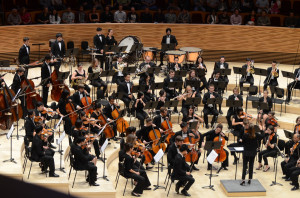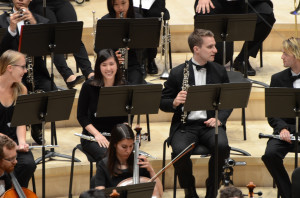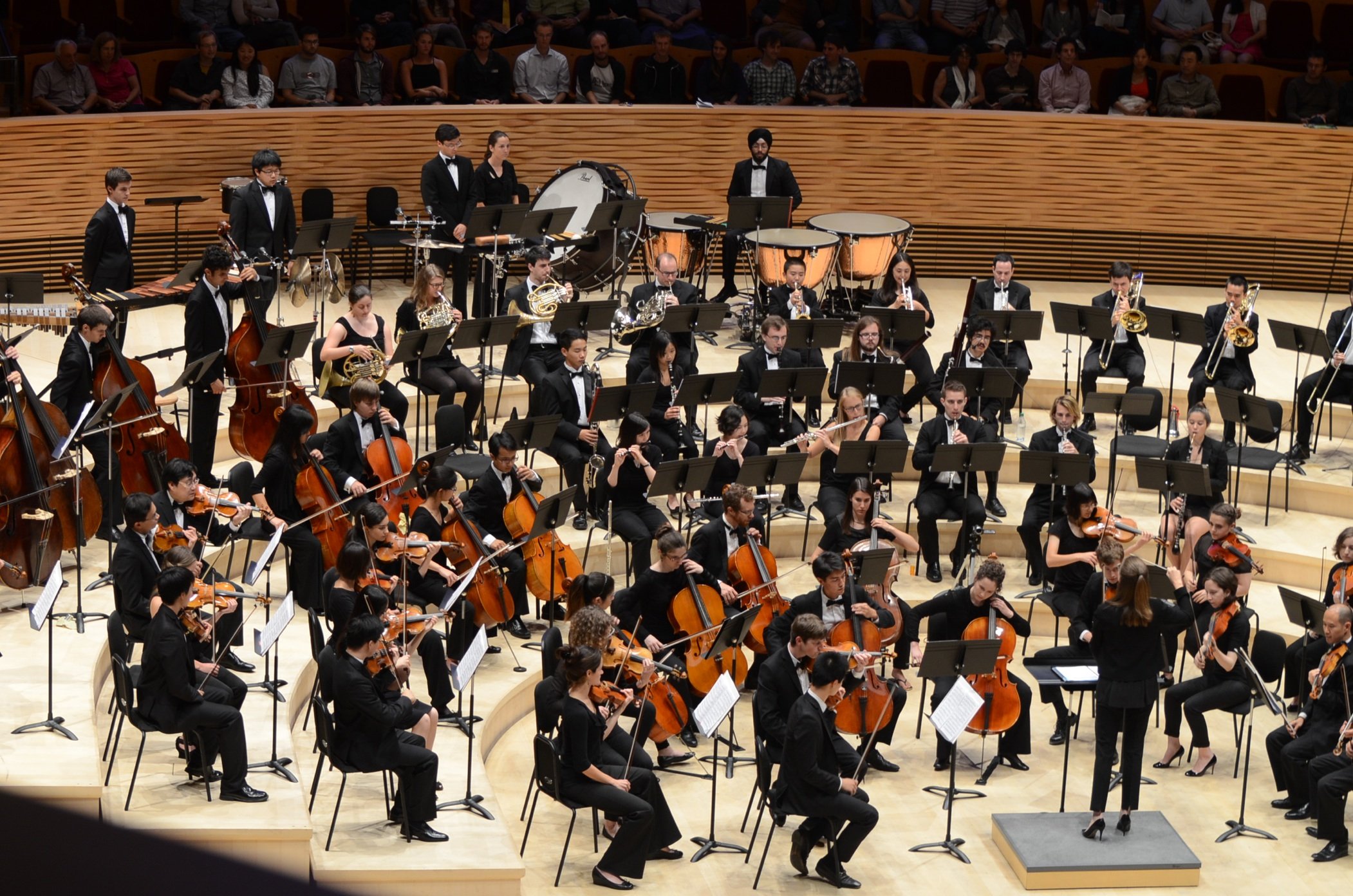
The Summer Stanford Symphony Orchestra brought the American sound to life in its July 12 concert at Bing Concert Hall, receiving a richly deserved round of applause after each part of the program.
The orchestra began by performing “Overture to‘The School for Scandal,’Op. 5” (1931) by Samuel Barber. With rounded sounds, the piece effectively served as an efficient segue into the rest of the concert. From the dramatically askew chords in the opening to the playfully risky melody of the violins, the program had a mischievous tone. The oboe’s whispery tranquility was a buffer between the bold dynamics of the first and final sections.
It continued with Wolfgang Amadeus Mozart’s “Sinfonia Concertante in E-flat Major, K. 364” (1779), which conductor Anna Wittstruck explained was a key source of inspiration for Barber.

Even sitting in Terrace 2 in the upper-rightmost wing of the hall, one could clearly make out the technical excellence of the solo violin and viola, performed by San Francisco Symphony member Chen Zhao and faculty member Sharon Wei, respectively. The back-and-forth between the violin’s treble and the viola’s lower, calmer tones created a complementary harmony between the two sounds.
As a whole, the orchestra’s whistling trills, smooth legatos and sharp staccatos created interesting contrasts in the first movement, “Allegro maestoso.” As was especially evident in the intense sections of the piece, the musicians clearly articulated accents and kept the audience from any case of drooping eyes.
Although the selection prominently featured the strings, this did not overshadow the brass and woodwinds; there was mostly good musical balance. During the second movement, “Andante,”the musicians artfully decorated the softer tones that complemented the melody of the soloists, all while keeping a steady, rhythmic beat. “Presto,” the final movement, exhibited more playful, staccato-driven pitches. Cries of “bravo” echoed from the crowd following the final notes of the movement.

After a brief intermission, the orchestra moved back into American music in the third piece, “Four Dance Episodes from ‘Rodeo’” (1942) by Aaron Copland. With the addition of more brass and percussion, there was a richer sound with bolder resonance throughout the hall.
It had a daring start before making the transition to more tranquil notes via the flutes and other winds in the second movement. The woodwinds were particularly prominent in the last section, in which it created a uniquely American tone with lively harmonies aided by string accompaniments.
The final piece of the evening, “An American in Paris” (1928) by George Gershwin, featured a lighthearted beginning with strong brassy sounds. I particularly enjoyed the rings of the xylophone and the syncopated rhythms from the percussionists.
The evening concluded with strong crescendos and a jazz-like melody, generating warm applause from the audience. The orchestra has certainly set the bar high for its next concert.
